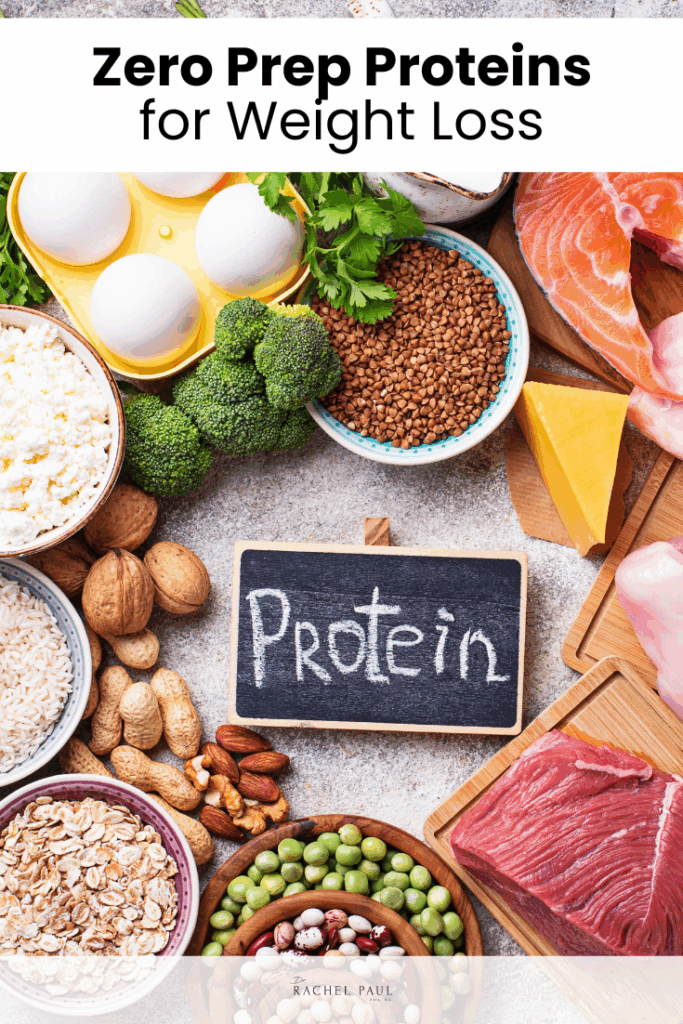Losing weight without counting calories is not only possible, it’s often one of the most freeing ways to reach your goals. You don’t have to track every bite or log meals on an app to make progress. Instead, you can rely on simple habits that help you feel full, stay energized, and build a routine that actually fits your life. This method focuses on understanding your hunger cues, selecting foods that taste good and satisfy you, and establishing a lifestyle that supports both your physical and emotional well-being. If you want a realistic approach, this guide provides everything you need.
Lose Weight in a Healthy, Sustainable, and Filling Way
Sustainable weight loss comes from consistency, not perfection. The goal isn’t to follow a strict set of rules. Instead, it’s to build patterns that work on busy weekdays, weekends, vacations, stressful seasons, and everything in between. These habits help you stay full longer, reduce mindless snacking, and build trust with your body.
Create Your Meals With Protein, Fat, and Fiber

Protein, fat, and fiber form the foundation of balanced eating. These nutrients work together to stabilize your hunger, reduce cravings, and help you stay satisfied after meals. When you build your meals around these three components, you naturally eat in a way that supports weight loss without calorie tracking.
A few extra tips to make this easier:
- Choose proteins you genuinely enjoy. The more you like them, the more consistent you’ll be.
- Add fats that make your meals taste richer and more satisfying. Fat helps slow digestion, so you stay full longer.
- Choose vegetables you love, not ones you feel obligated to eat.
- Keep your starch or fruit simple and portioned so you don’t feel deprived or overeat.
Balanced meals make the rest of the day easier. You snack less, you have more stable energy, and you don’t have to think about food as often.
Example Meals

Using a simple formula removes the guesswork from eating. When you know your meals include protein, fat, and fiber, you feel full and satisfied without needing a detailed plan. These examples demonstrate the flexibility of the formula. You can mix and match ingredients, simplify meals on busy days, or batch prep a few components that carry you through the week.
Try rotating 2 to 3 meals per category so meal planning feels easy and not overwhelming. You don’t need variety every day. Most people do better when they repeat meals they genuinely enjoy.
Plan for Dessert and Alcohol
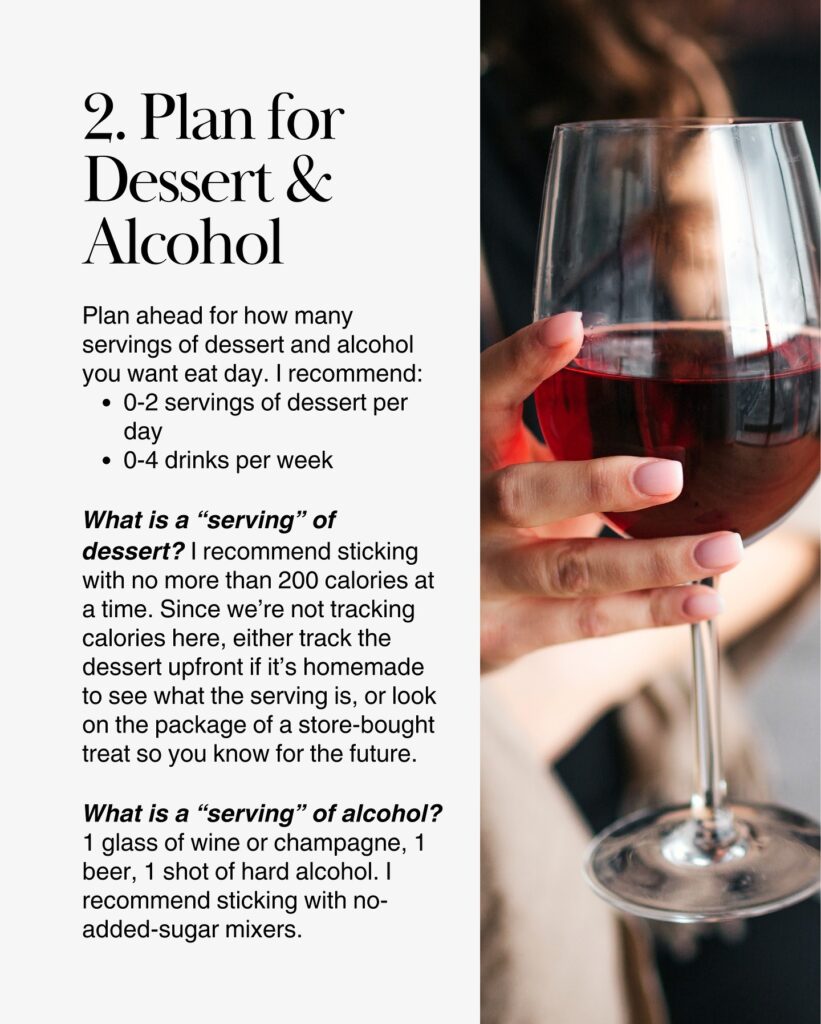
You don’t have to cut out dessert or alcohol to see results. In fact, allowing room for the foods you love helps prevent bingeing and the “all or nothing” mindset. Planning removes the guilt and lets you enjoy these treats mindfully.
Supportive tips:
- Decide earlier in the day whether you’ll have dessert. This reduces impulsive eating.
- Choose a dessert you actually like. Don’t waste calories on something you don’t enjoy.
- If drinking alcohol, hydrate well and aim to have it with a meal for better hunger control.
- Notice how alcohol affects your hunger the next day. Some people feel hungrier after drinking, others don’t. Awareness helps.
This approach gives you freedom without losing progress.
The Hunger Scale

Learning to trust your hunger is a skill. Most of us spend years eating based on rules, times of day, or convenience rather than actual physical cues. The hunger scale helps you break that pattern. When you eat at the right hunger level and stop before feeling uncomfortable, your body starts to regulate itself.
Extra tips:
- Start checking in with yourself before meals. Ask “Where am I on the scale?”
- Pause halfway through your meal and do a gentle fullness check. You don’t have to stop, just observe.
- If you struggle to notice hunger, practice with short windows of time where you wait for early signs before eating on autopilot.
The more you practice, the more natural this becomes.
Be a “Food Snob”
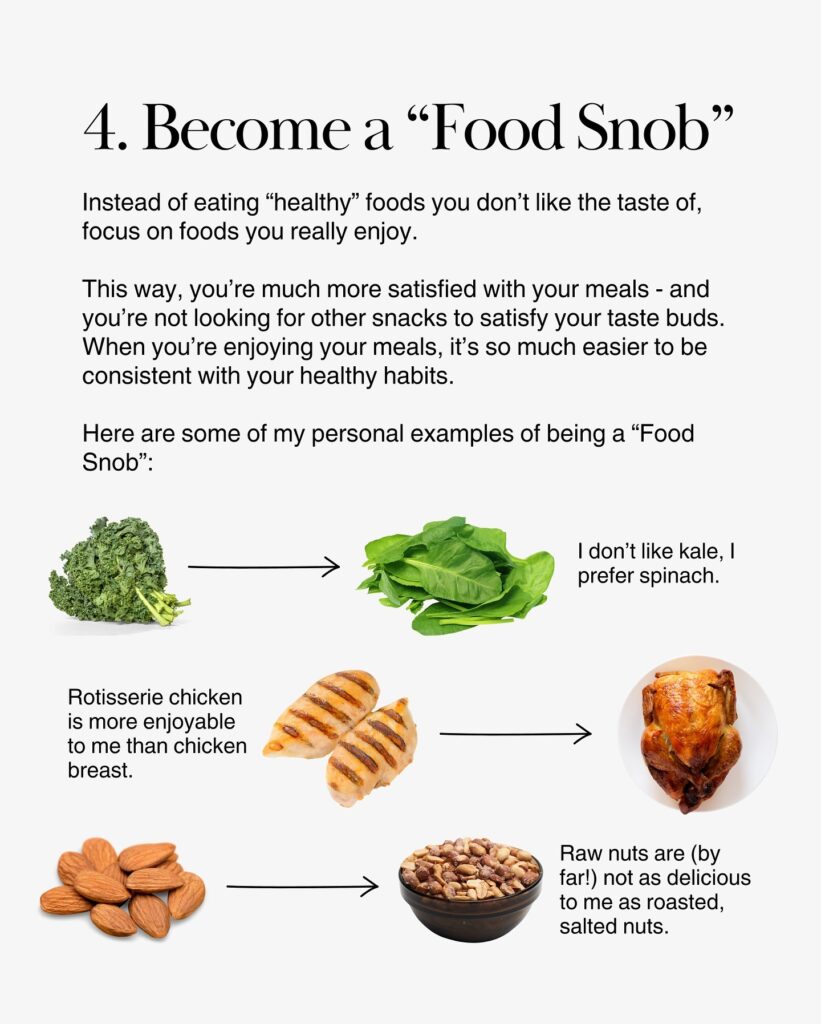
Satisfaction matters. When you eat foods you don’t enjoy, you end up grazing later to fill that missing joy. Being a “food snob” simply means picking foods that taste good to you. This is not about being picky. It’s about choosing meals that feel worth eating.
Supportive examples:
- If you only enjoy certain vegetables cooked a certain way, honor that.
- If plain chicken breast feels dry or boring, choose a version that tastes better.
- If a snack feels unsatisfying, it may not be the right choice for you, even if it’s technically healthy.
This mindset removes the pressure to eat “perfect” foods and makes healthy eating feel natural.
Walk Everyday
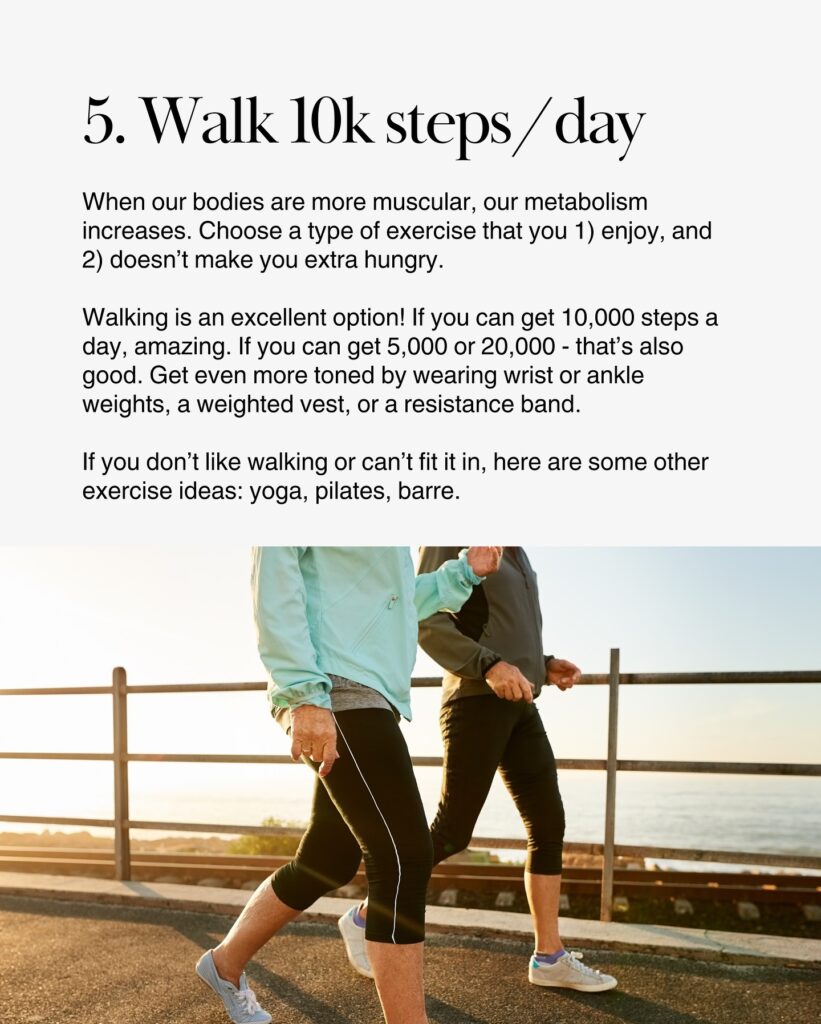
Walking is one of the easiest ways to support weight loss. It doesn’t spike hunger the way intense workouts can. It boosts your metabolism, mood, and energy without requiring equipment or a gym membership.
Extra support:
- Break up walking throughout the day if 10,000 steps feels overwhelming.
- Add light weights or resistance when you feel ready to increase intensity.
- Use walks as mental breaks, time to listen to music, or a moment to decompress.
- Every step counts, even on busy days.
Walking is effective because it’s consistent and gentle on your body.
Get Plenty of Sleep
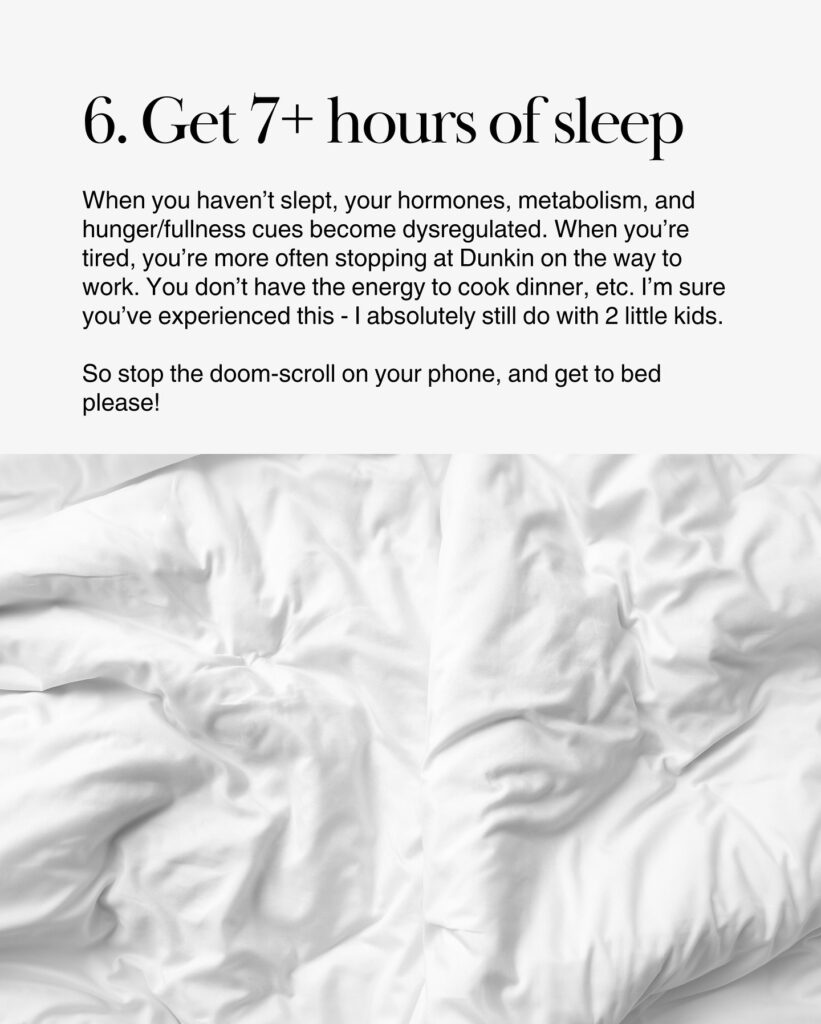
Sleep is foundational for weight loss. When you’re tired, your hunger hormones become imbalanced, which makes overeating more likely. You also crave high-carb or high-sugar foods for a quick energy boost.
Tips for better sleep:
- Set a simple wind-down routine, even if it’s just 10 minutes.
- Keep your phone across the room.
- Try going to bed 15 minutes earlier each week until you hit your goal.
- Notice how better sleep affects your hunger and willpower the next day.
A rested body makes better decisions and craves more balanced meals.
Fill Your Life

Weight loss becomes easier when food is not your main source of comfort or excitement. Building joy outside of eating fills emotional needs that often drive snacking. When you feel connected and fulfilled, your urges for “mindless eating” tend to weaken.
Ideas to fill your life:
- Plan small daily moments of joy, such as taking a walk or listening to a favorite playlist.
- Reconnect with old hobbies or interests.
- Spend intentional time with people who make you feel good.
- Create a self-care routine that is calming and realistic.
When your life feels full, it becomes easier to choose food from a place of hunger instead of habit.
Lose Weight Without Counting
You can lose weight without counting calories by focusing on habits that nourish your body, making you feel steady and satisfied. Balanced meals, hunger cues, enjoyable foods, simple movement, sleep, and joy all work together. These steps are realistic, repeatable, and forgiving. You don’t have to be perfect. You just need to stay consistent.
Want help getting started?
Grab the free meal plan:
FREE Meal Plan


